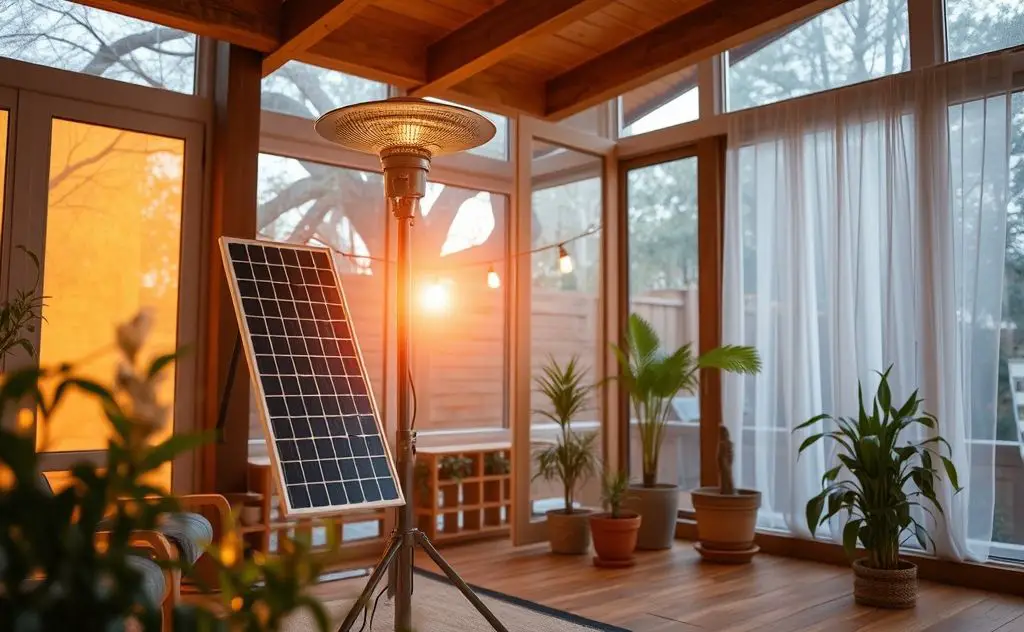Solar powered space heaters for indoor use harness sunlight to efficiently warm spaces, reducing energy costs and environmental impact while providing sustainable heating solutions.
Solar powered space heaters offer an innovative way to heat indoor spaces while reducing energy costs. These devices harness sunlight to provide clean, renewable warmth without relying on grid electricity.

How Solar Space Heaters Work
Solar indoor heaters use photovoltaic panels to convert sunlight into electricity. This powers heating elements that warm your living space. Some models include battery storage for nighttime operation.
Key Components
- Solar panels (typically 100-300 watts)
- Battery storage system
- Heating element (often ceramic or infrared)
- Charge controller
- Temperature controls

Benefits of Solar Indoor Heaters
These systems provide several advantages over traditional electric heaters:
| Feature | Solar Heater | Electric Heater |
|---|---|---|
| Energy Source | Renewable solar power | Grid electricity |
| Operating Cost | $0 after installation | $0.15-$0.30 per hour |
| Carbon Footprint | Zero emissions | Depends on grid source |
Space Considerations
Most solar heaters work best in spaces under 200 square feet. For larger areas, consider multiple units or a built-in heating system as supplemental warmth.
Top Solar Heater Features
When shopping for a solar space heater, look for these important features:
Essential Features
- Adjustable thermostat
- Overheat protection
- Energy storage capacity
- Portability options
- Safety certifications (UL, ETL)
According to U.S. Department of Energy, proper sizing is crucial for efficient operation.
Installation Tips
Proper setup ensures optimal performance:
Panel Placement
Install solar panels where they receive maximum sunlight – typically south-facing at a 30-45 degree angle. Avoid shading from trees or buildings.
Indoor Positioning
Place the heater unit near the area you want to warm, but allow at least 3 feet of clearance from furniture and curtains. Consider a wall-mounted option for space efficiency.
Maintenance Requirements
Solar heaters require minimal maintenance:
- Clean solar panels monthly
- Check connections seasonally
- Inspect heating elements annually
- Monitor battery health (if equipped)
The Solar Reviews website notes that snow removal may be necessary in winter climates.
Cost Considerations
While solar heaters have higher upfront costs than conventional models, they offer long-term savings:
Price Range
- Basic portable units: $200-$500
- Mid-range systems: $500-$1,200
- Whole-room solutions: $1,200-$3,000
Payback Period
Most systems pay for themselves in 2-5 years through energy savings, depending on usage and local electricity rates.
Limitations to Consider
Solar heaters work best when:
- Used in sunny climates
- Supplementing existing heat
- Heating small, well-insulated spaces
For larger heating needs, consider pairing with a propane heater for backup during cloudy periods.
Future Developments
Emerging technologies promise even better solar heating solutions:
- Higher-efficiency photovoltaic cells
- Improved thermal storage
- Smart home integration
- Hybrid solar-electric designs
